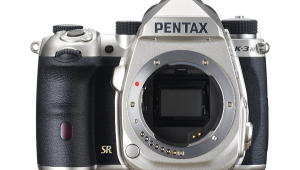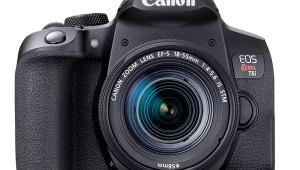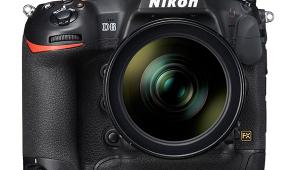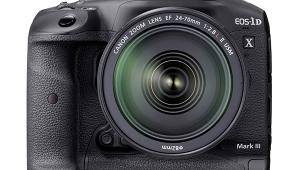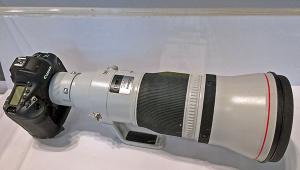New Gear For 2007: PMA Report; Digital SLRs Page 2
Four Thirds Gathers Steam
After initial skepticism, I've grown more and more impressed with the Four Thirds system created by Olympus and embraced by many companies, including Panasonic and Leica and lens makers such as Sigma. At PMA 2007 Olympus showed the concept of a long-awaited successor to the professional E-1 that inherits all the E-1's characteristics but with improved specifications, greater system expandability, and a rugged professional design that's able to withstand serious use. Also on display were the here-and-now ultra-compact E-410 and high-performance E-510 with Mechanical Image sensor shift Image Stabilization.
 |
|
|
All three models incorporate full-time Live View, an enhanced rear panel LCD monitor that can be used to compose images while shooting. To support the new cameras, Olympus is developing four interchangeable lenses, three of which will incorporate a SWD (Supersonic Wave Drive) autofocusing system and a 2x tele-converter.
 |
|
|
The products under development were exhibited under glass as reference products. Cameras I could actually touch included the EVOLT (a name I still don't like) E-410 that appears to be the spiritual successor to the legendary Olympus OM-1. It has a 2.5" Live View LCD, Supersonic Wave Filter dust reduction system, and a 10-megapixel sensor. Its TruePic III image processor reduces noise by the equivalent of one full stop over previous versions. The E-410 is available in three configurations, beginning at $699.99 for the body. The EVOLT E-510 is slightly larger and has Mechanical Image Stabilization with Supersonic Wave Drive technology that provides blur-free images with more than 30 Zuiko Digital lenses. The lightweight body has an ergonomic grip, ensuring the camera fits snugly in the hand, and is complemented by two new ultra-compact digital specific lenses.
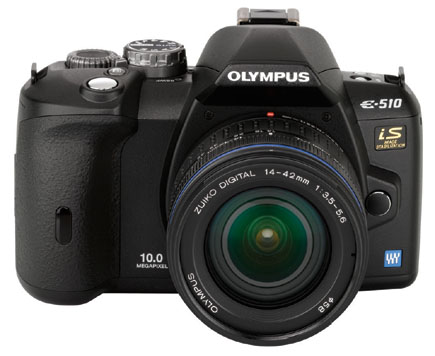 |
|
|
Sony Starts A System
It turns out that Sony considers its Alpha to be the first of a complete system of D-SLRs, with the A100 being an entry-level model. It will be followed this year with a mid-level version aimed at advanced amateurs and aspiring pros that incorporates a new image sensor and BIONZ processor that manipulates color, sharpness, white balance, and noise reduction data. The yet unnamed SLR features what is now the de rigueur in camera Image Stabilization. The Pro model, which features a shoeless penta-prism with a wedge sharp enough to cut logs, is positioned as a flagship model with an Image Stabilized body, newly designed sensor, and the BIONZ processor. Look for it later rather than sooner. What does all this mean? With an expected flattening of digital point-and-shoot camera sales, Sony is serious about the SLR market and announced there will be eight new SLR lenses with specifications varying from amateur to more professional zoom and prime lenses. All this is from a company that brought us Betamax, Blu-ray, and PlayStation, so nothing will surprise me.
And don't forget: When all SLRs are digital, calling them D-SLRs will sound as quaint and outmoded as calling cars "horseless carriages."
Windows Vista & Your Camera
If you ever needed proof that companies such as Microsoft see D-SLRs only as computer peripherals, then look no farther than the "Certified for Windows Vista" logo the company has foisted on the photographic industry. It seems many cameras will need firmware/software upgrades to be Vista compatible and some won't work at all. While this affects all digital cameras and SLRs to some degree it seems to hit Sigma hardest. When connected to a Vista computer, Sigma SD9 and SD10 cameras are not recognized and there are no plans to release a firmware update for compatibility. All is not lost since you can always transfer images using a CompactFlash card reader, which I guess most people do anyway. Sigma's Photo Pro 2.1 software and earlier versions are "not guaranteed" to work with Vista which sounds to me like sometimes it will work, sometimes it won't, depending on the version of Vista (there are several) you're running and your hardware configuration. On the sunny side of the street, the Sigma SD14 announced at photokina 2006 is equipped with a mass storage connection and the company's Photo Pro 3.0 software is compatible with Windows Vista.
What's all this got to do with Microsoft's plan to overthrow JPEG? Originally called Windows Media Photo but renamed HD Photo in November, Microsoft says, "Our ultimate goal is that it does become the de facto standard people are using for digital photos." Not surprisingly, HD doesn't stand for high definition, it's just to make you think it does. (Is HD ice cream around the corner?) HD Photo supports a wide range of features, including multiple color formats for display or print, fixed or floating point high-dynamic range, wide gamut image encoding, lossless or high-quality lossy compression, decoding for multiple resolutions, minimal overhead for format conversions or transformations. Excited yet? Microsoft built HD Photo support into Windows Vista's two Home versions. Adobe is working with Microsoft to develop a plug-in for Photoshop users to open and save HD Photo files, much like the mostly useless JPEG2000 plug-in.
Manufacturers/Distributors' addresses can be found by visiting the Instant Links section of our website at: www.shutterbug.com/currentissuelinks/.
- Log in or register to post comments


